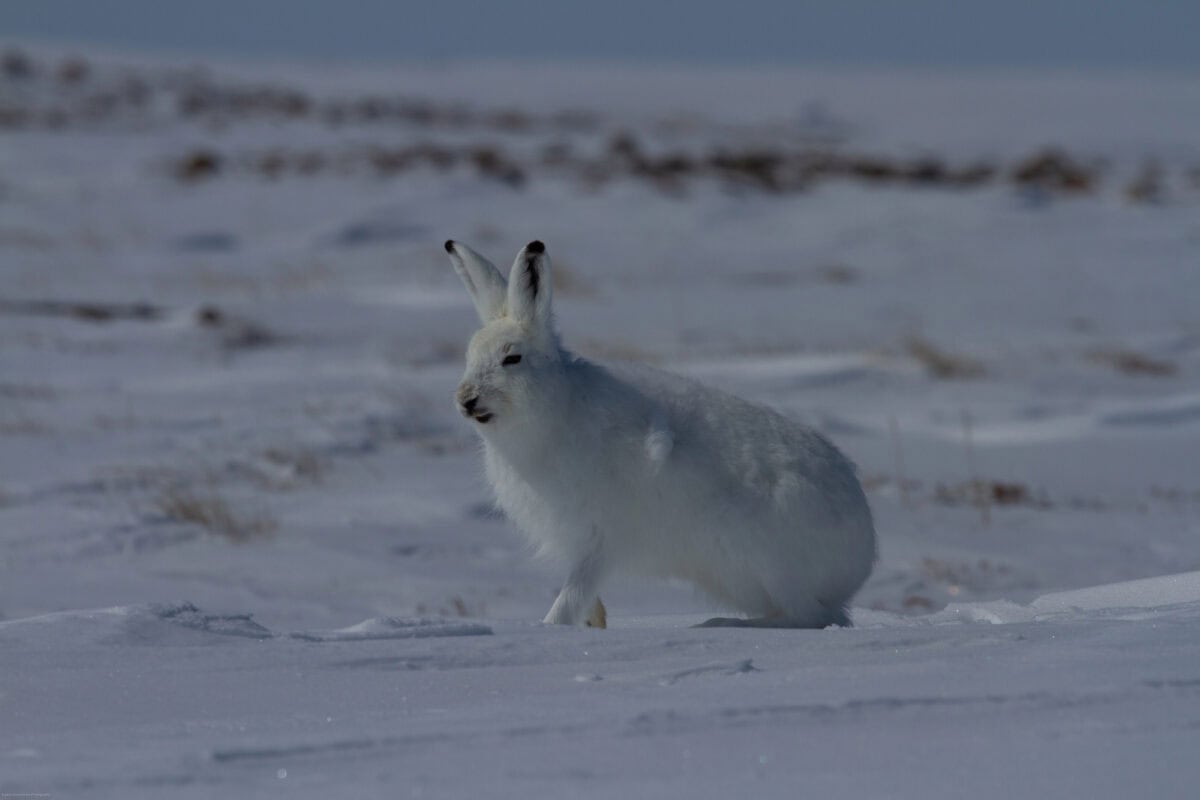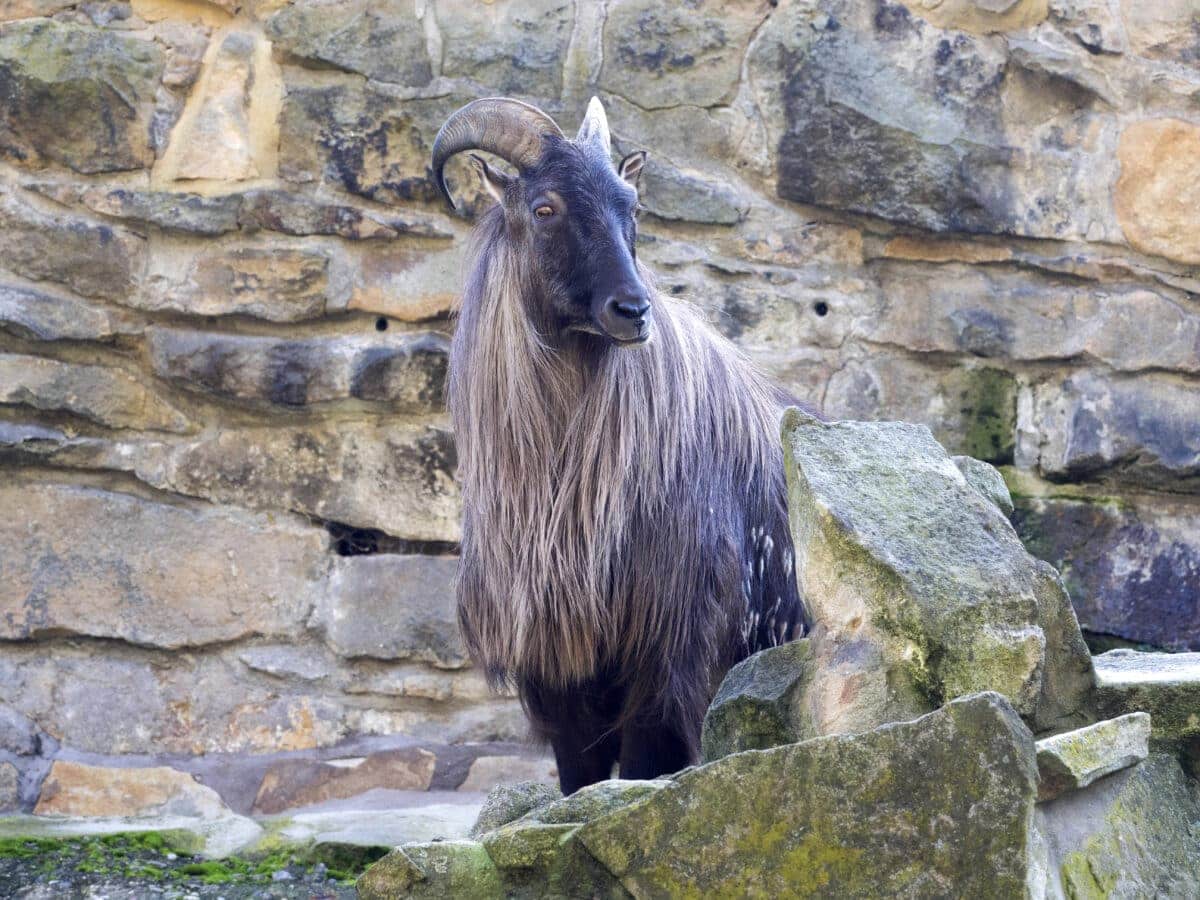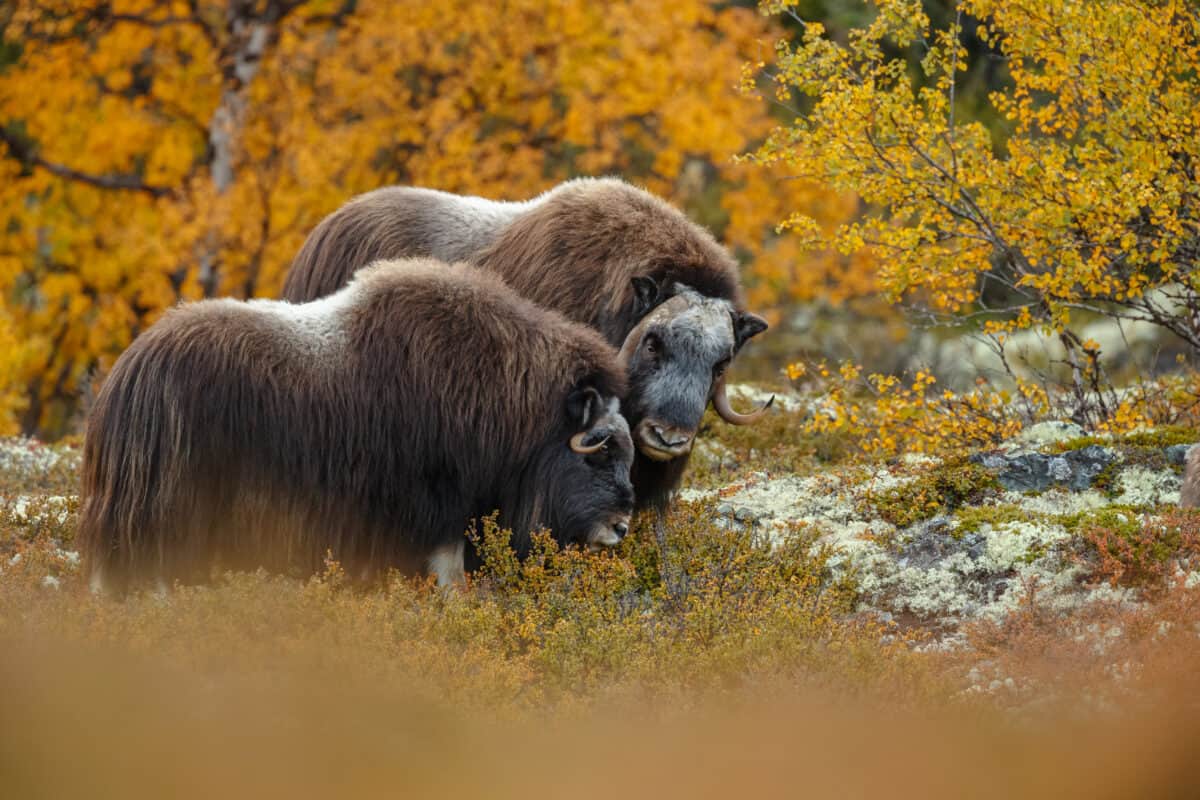In the harshest winter landscapes, where temperatures plummet far below freezing and blizzards rage for days, most life forms would quickly perish. Yet, through millions of years of evolution, certain remarkable animals have developed extraordinary adaptations that allow them to not just survive, but thrive in extreme cold environments. From the depths of the Arctic Ocean to the windswept peaks of mountain ranges, these resilient creatures employ fascinating biological mechanisms to withstand conditions that would be lethal to most species. This article explores 14 wild animals that have mastered the art of cold survival, showcasing nature’s incredible ability to adapt to even the most challenging environments on Earth.
14. Arctic Fox – The Cold Weather Specialist

The Arctic fox (Vulpes lagopus) is perhaps nature’s most accomplished cold weather specialist, capable of surviving temperatures as low as -58°F (-50°C) without even shivering. Their incredible adaptations begin with their compact build—small ears, short muzzle, and stubby legs—which minimizes heat loss by reducing surface area. During winter, these remarkable animals grow incredibly dense fur that’s considered the warmest of any mammal, providing insulation so effective that Arctic foxes don’t begin to shiver until temperatures drop below -94°F (-70°C). Their fur even covers the pads of their feet, allowing them to walk comfortably on ice and snow while providing traction. Perhaps most impressive is their ability to reduce blood flow to peripheral areas when temperatures drop extremely low, concentrating warmth in their core to maintain vital organ function—a technique known as countercurrent heat exchange.
13. Polar Bears – Masters of Arctic Survival

As the world’s largest land predator, the polar bear (Ursus maritimus) has evolved remarkable adaptations for surviving the punishing Arctic environment. Their most distinctive feature is a thick layer of blubber—sometimes reaching 4.5 inches (11.4 cm)—which provides exceptional insulation. This blubber layer is complemented by two distinct fur layers: a dense, water-repellent undercoat and longer guard hairs that appear white but are actually transparent and hollow, helping trap heat from the sun. These hairs also reflect ultraviolet light, making polar bears nearly invisible to many animals in their ultraviolet visual spectrum. Beneath their white fur, polar bears’ skin is black, optimizing heat absorption. These bears are such efficient heat conservers that they often overheat when running and must cool down by resting or swimming. Their massive, partially webbed paws—measuring up to 12 inches (30 cm) in diameter—act like snowshoes, distributing their weight across snow and ice while providing powerful swimming propulsion.
12. Emperor Penguins – Antarctica’s Hardy Residents

Emperor penguins (Aptenodytes forsteri) endure the world’s most extreme winter conditions, breeding during the Antarctic winter when temperatures can plunge to -76°F (-60°C) amid howling winds. Their survival strategy combines several specialized adaptations, beginning with four layers of overlapping feathers that provide superior insulation and waterproofing. Beneath these feathers lies a thick layer of blubber, storing energy and providing crucial insulation. Emperor penguins possess specialized nasal chambers that recover up to 80% of heat that would otherwise be lost through exhalation. Their remarkable circulatory systems include specialized arteriovenous heat exchangers that can selectively redirect blood flow to prevent heat loss from extremities. Perhaps their most famous survival strategy is social: the penguins huddle together in tight formations that can include thousands of individuals, rotating positions so that each bird gets a turn in the warmer interior. This huddling behavior can raise the temperature within the group to 70°F (21°C), even when external temperatures are far below freezing.
11. Musk Ox – The Ice Age Survivor

The musk ox (Ovibos moschatus) is a living relic from the last Ice Age, having survived in the Arctic for thousands of years after many of its contemporaries went extinct. These prehistoric-looking bovids possess an extraordinary double coat that makes extreme cold survival possible. Their outer guard hairs, called “qiviut,” can grow up to 24 inches (60 cm) long, creating a shaggy curtain that reaches nearly to the ground and protects against wind and moisture. Beneath this outer layer grows one of nature’s finest insulating materials—a soft underwool eight times warmer than sheep’s wool and finer than cashmere. This remarkable insulation allows musk oxen to maintain a core body temperature of 101°F (38.3°C) even when ambient temperatures drop to -40°F (-40°C). When threatened by predators like wolves, musk oxen employ a defensive strategy perfectly adapted to open tundra environments—they form a tight circle with their young protected in the center and their horned heads facing outward, creating a nearly impenetrable barrier.
10. Snowy Owl – The Arctic Hunter

The snowy owl (Bubo scandiacus) is one of the few bird species that doesn’t migrate south during harsh Arctic winters, instead remaining year-round in some of Earth’s coldest regions. These magnificent birds are perfectly equipped for cold survival, with dense feathering that covers every part of their body—even their feet and bill base are heavily feathered, providing exceptional insulation. Male snowy owls can be almost entirely white, while females typically display more dark barring; this white coloration provides excellent camouflage in snowy environments. Their large size helps maintain body heat, with females weighing up to 6.6 pounds (3 kg) and having a wingspan of up to 5.5 feet (1.7 meters). Snowy owls have a remarkable ability to conserve energy by remaining motionless for hours, occasionally entering a state of reduced metabolism similar to torpor to minimize energy expenditure during particularly harsh conditions. Unlike most owls, which are nocturnal, snowy owls hunt during the day—an adaptation to the Arctic’s seasonal periods of continuous daylight and darkness—preying primarily on lemmings but capable of taking prey as large as geese and hares.
9. Wood Frog – The Freeze-Tolerant Amphibian

The wood frog (Lithobates sylvaticus) employs one of nature’s most astonishing cold-survival strategies—it literally freezes solid for months at a time. Found as far north as the Arctic Circle, these remarkable amphibians have evolved the ability to survive having up to 65% of the water in their bodies frozen during winter. As temperatures drop in autumn, wood frogs burrow under leaves on the forest floor where they begin producing large amounts of glucose and urea, which function as natural antifreeze. These compounds prevent complete freezing of crucial cellular components while allowing ice to form in spaces between cells and organs. During this frozen state, the frog’s heart stops beating, it stops breathing, and brain activity ceases—by any clinical definition, the frog is dead. Remarkably, when spring arrives and temperatures rise, the frog thaws from the inside out, with its heart beginning to beat even while ice still remains in the body cavity. Within hours, the wood frog returns to normal activity, having survived in a state that would kill almost any other vertebrate.
8. Wolverine – The Cold-Defying Mustelid

Dubbed “the glutton” for its voracious appetite, the wolverine (Gulo gulo) fearlessly patrols vast territories across the northern hemisphere’s coldest regions. These powerful mustelids possess several adaptations that allow them to thrive where most predators struggle to survive. Their exceptionally oily, hydrophobic fur resists frost build-up and provides superior insulation, while broad, plantigrade feet act as natural snowshoes. Wolverines have evolved a metabolism that runs at twice the rate expected for an animal their size, generating tremendous internal heat. This high metabolic rate requires constant fuel, explaining why wolverines are relentless hunters and scavengers, capable of taking down prey many times their size and driving away much larger predators from kills. Their powerful jaws and specialized molars can crush frozen meat and bone, allowing them to consume carcasses that would be inaccessible to other predators. Recent research has revealed that wolverines cache food in natural refrigerators—burying meat under snow and rocks in cold microclimates that preserve their food stores long into warmer months, providing crucial resources when hunting becomes challenging.
7. Snow Leopard – The Mountain Ghost

The elusive snow leopard (Panthera uncia) inhabits the rugged mountains of Central Asia at elevations up to 18,000 feet (5,500 meters), where temperatures regularly plummet below -40°F (-40°C) and oxygen levels are significantly lower than at sea level. These magnificent cats possess extremely thick fur—the densest of any big cat—with each square inch containing about 4,000 hairs. Their fur grows up to five inches long on their bellies, providing crucial insulation when moving through deep snow. Snow leopards have unusually large nasal cavities that pre-warm frigid air before it reaches their lungs, and their wide, fur-covered paws act as natural snowshoes while keeping their footpads insulated from ice and snow. Their extraordinarily long tails, which can measure up to 3.5 feet (1 meter), serve multiple purposes: providing balance on steep terrain, storing fat reserves, and wrapping around their bodies as additional insulation during sleep. Snow leopards can leap up to 50 feet (15 meters) in a single bound—an adaptation for hunting in their mountainous habitat where prey is often separated by steep, rocky chasms.
6. Arctic Hare – The Polar Rabbit

The Arctic hare (Lepus arcticus) has evolved to survive in one of Earth’s most unforgiving environments, the Arctic tundra, where winter temperatures routinely drop below -40°F (-40°C). Unlike many Arctic mammals that rely on thick layers of fat, these hares maintain a lean, muscular build but grow exceptionally dense fur that provides superior insulation. In winter, their coat turns pure white (except for black-tipped ears), providing perfect camouflage against snow, while summer brings a blue-gray coloration that blends with rocks and vegetation. Their compact form—including small ears and short limbs compared to other hare species—significantly reduces heat loss. Arctic hares have evolved several behavioral adaptations for extreme cold, including creating shallow depressions in snow (forms) that shield them from wind, and sometimes digging tunnels through snowdrifts for additional protection. They can run at speeds up to 40 mph (64 km/h) and often travel in groups of up to 100 individuals during winter, providing safety in numbers against predators. Arctic hares rarely drink liquid water, obtaining moisture from the vegetation they consume even when it’s frozen solid.
5. Beluga Whale – The Arctic Ocean Navigator

The beluga whale (Delphinapterus leucas) thrives in Arctic and sub-Arctic waters where temperatures hover just above freezing and surface ice is a constant presence. Unlike most marine mammals, belugas lack a dorsal fin—an adaptation that reduces heat loss and allows them to navigate more easily under ice sheets without risk of injury. Instead of relying on blubber alone for insulation, belugas have developed an exceptionally thick epidermis (up to 10 times thicker than in other cetaceans) that provides additional thermal protection. Their distinctive white coloration, which gives them the nickname “sea canary,” not only provides camouflage in icy waters but may also play a role in cold adaptation by reflecting rather than absorbing the limited Arctic sunlight. Belugas possess remarkable physiological control, able to adjust their blood flow to prioritize core body temperature regulation. Their flexible neck—unique among whales—contains unfused cervical vertebrae that allow them to turn their heads nearly 90 degrees, crucial for hunting in ice-filled waters where maneuvering the entire body may be impossible. Belugas use their bulbous foreheads (called melons) to produce and focus sounds for echolocation, allowing them to find breathing holes in ice and locate prey in the dark Arctic waters.
4. Arctic Ground Squirrel – The Supercool Hibernator

The Arctic ground squirrel (Urocitellus parryii) employs one of the most extreme cold survival strategies in the animal kingdom, entering a hibernation state so profound that it pushes the boundaries of mammalian physiology. During their 7-8 month hibernation period, these remarkable rodents perform a biological feat once thought impossible—they maintain a body temperature below freezing without dying. Their body temperature can drop to as low as 26.7°F (-3°C), the lowest recorded for any hibernating mammal, in a state researchers call “supercooling.” At these temperatures, the squirrels’ heart rates slow from 200-300 beats per minute to just 3-10, and they take only a few breaths per minute. To prevent tissue damage from ice formation, Arctic ground squirrels produce specialized proteins that act as natural antifreeze. Perhaps most remarkably, every two to three weeks during hibernation, the squirrels briefly raise their body temperature to normal levels for about 12-15 hours before returning to their supercooled state—a process requiring enormous energy expenditure whose purpose remains somewhat mysterious to scientists, though it may help maintain neural connections and prevent brain damage.
3. Greenland Shark – The Frozen Ocean Dweller

The Greenland shark (Somniosus microcephalus) has mastered the art of survival in the Arctic and North Atlantic Oceans, where water temperatures can drop to 28.8°F (-1.8°C)—below the freezing point of fresh water. These mysterious creatures, which can live for over 400 years (making them the longest-lived vertebrates on Earth), contain high levels of trimethylamine N-oxide (TMAO) in their tissues, which acts as a natural antifreeze by preventing proteins from being damaged by cold and high pressure. Unlike most sharks, which must swim constantly to breathe, Greenland sharks have evolved a sluggish metabolism and swimming pace (typically less than 1 mph), conserving energy in their food-scarce environment. Their extremely slow metabolism contributes to their extraordinary longevity but also means they don’t reach sexual maturity until around 150 years of age. Greenland sharks hunt primarily by scent rather than vision—a useful adaptation in the dark Arctic waters and particularly important since most are parasitized by copepods that attach to their corneas, significantly impairing their eyesight. Despite their seemingly lethargic nature, they are capable predators of seals, suggesting they may employ a stealth hunting strategy, approaching sleeping seals slowly before launching a sudden attack.
2. Himalayan Tahr – The High-Altitude Cold Specialist

The Himalayan tahr (Hemitragus jemlahicus) has perfected the art of survival in the harsh, cold environments of the Himalayan mountains, thriving at elevations between 8,200 and 16,500 feet (2,500-5,000 meters) where oxygen is scarce and temperatures can drop well below freezing. These goat-like ungulates possess several remarkable cold-weather adaptations, beginning with their exceptional multi-layered coat. Their outer layer consists of guard hairs up to 15 inches (38 cm) long that provide waterproofing and protection from wind, while a dense woolly undercoat traps body heat with remarkable efficiency. Both males and females grow noticeably thicker winter coats, with males developing particularly impressive manes around their necks and shoulders. Tahrs have evolved specialized hemoglobin that binds oxygen more efficiently than that of lowland animals, allowing them to extract sufficient oxygen from the thin mountain air. Their hooves feature soft, rubbery centers surrounded by hard, sharp edges—a perfect combination for gripping the steep, icy terrain they navigate daily. This sure-footedness allows tahrs to escape predators by scaling near-vertical cliffs that few other animals could attempt, moving comfortably on ledges barely wider than their hooves.
1. Svalbard Reindeer – The Arctic Archipelago Survivor

The Svalbard reindeer (Rangifer tarandus platyrhynchus) is a subspecies uniquely adapted to the extreme cold and isolated environment of Norway’s Svalbard archipelago, situated well within the Arctic Circle. Compared to mainland reindeer, Svalbard reindeer are noticeably smaller and more compact—a crucial adaptation that reduces heat loss by minimizing surface area relative to body mass. Adult males typically weigh around 150 pounds (68 kg), while females are even smaller, enhancing their energy efficiency during harsh winters. Their dense, woolly coat—arguably the thickest among all reindeer populations—provides exceptional insulation, allowing them to withstand temperatures as low as -40°F (-40°C) and fierce Arctic winds. Beneath their skin, a substantial layer of fat serves as both insulation and an essential energy reserve during the long, food-scarce winter months. Unlike migratory mainland reindeer, Svalbard reindeer are largely sedentary, making only short, localized movements to forage, which helps them conserve energy in their treacherous, snow-covered habitat.
Conclusion:

Across the planet’s coldest and most unforgiving landscapes, life has not just endured—it has flourished. From the thick-furred Arctic fox to the deep-diving Greenland shark, each of the animals highlighted in this article reveals a stunning example of evolutionary ingenuity. Through specialized adaptations like super-insulating coats, natural antifreeze compounds, hibernation strategies, and behavioral teamwork, these species have mastered the art of survival where few others could. Their resilience is a powerful reminder of nature’s extraordinary ability to adapt to even the harshest challenges. As climate change continues to alter these fragile environments, understanding and protecting these remarkable cold-weather survivors becomes more important than ever—not just for their sake, but for the health of the entire planet.
- 11 Myths About Zebras Busted by Science - August 8, 2025
- 13 Creatures That Can Survive in Outer Space - August 8, 2025
- The Ultimate Fossil Showdown Bewteen an Allosaurus and T-Rex - August 8, 2025

